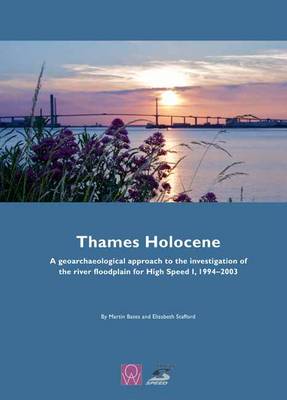The archaeological investigation of the route of High Speed 1 (HS1; formerly the Channel Tunnel Rail Link) through the Thames Marshes required an innovative approach to mitigation in order to find and reach the deeply buried, but highly significant, palaeoenvironmental and geoarchaeological sequences.
Early on in the construction project it was evident that a geoarchaeological approach would be necessary because of the depth of sequences and the relative invisibility of the archaeological resource, both within the Historic Environment Record, and to conventional archaeological prospection. An initial desk-based study of geotechnical and geomorphological data produced a model for the alluvial corridor which categorised zones of potential that could be compared against construction impacts. Subsequent field survey included geophysical investigation of buried sediment bodies, the use of boreholes, cone penetration testing and conventional test pitting and trenching.
The project was highly successful in predicting the location of buried archaeological remains in a number of locations. Key amongst these are extensive remains excavated in the Ebbsfleet Valley, Mesolithic flint scatters at Tank Hill Road, Aveley, and Late Upper Palaeolithic and Neolithic scatters on Swanscombe Marsh. Other sites described here include an in situ Early Neolithic flint scatter and evidence of seasonal Roman and medieval activity on Rainham and Wennington Marshes. As important, in addition to the archaeological results, this work also presents the methodological approach that was adopted for the investigation of approximately 18km (17%) of the HS1 route across an area of thick alluvium.
- ISBN10 0954597095
- ISBN13 9780954597092
- Publish Date 31 August 2013
- Publish Status Transferred
- Out of Print 1 July 2021
- Publish Country GB
- Imprint Oxford Archaeology
- Format Hardcover
- Pages 280
- Language English
